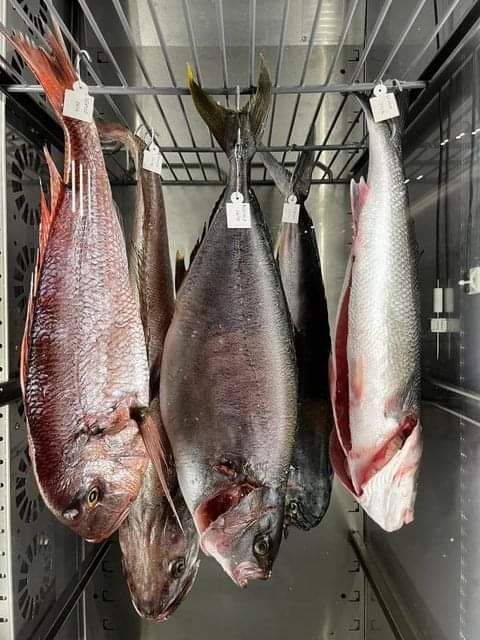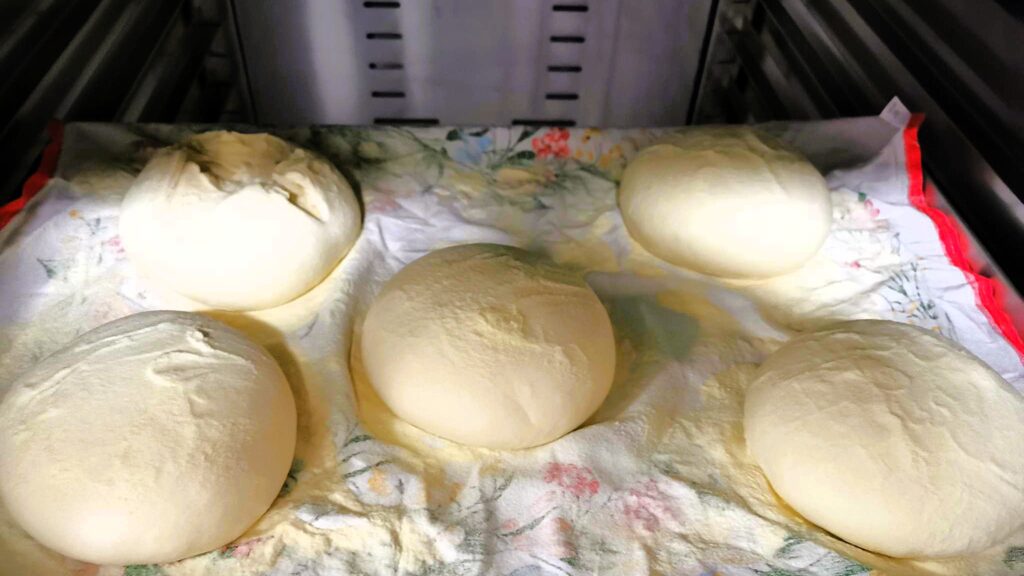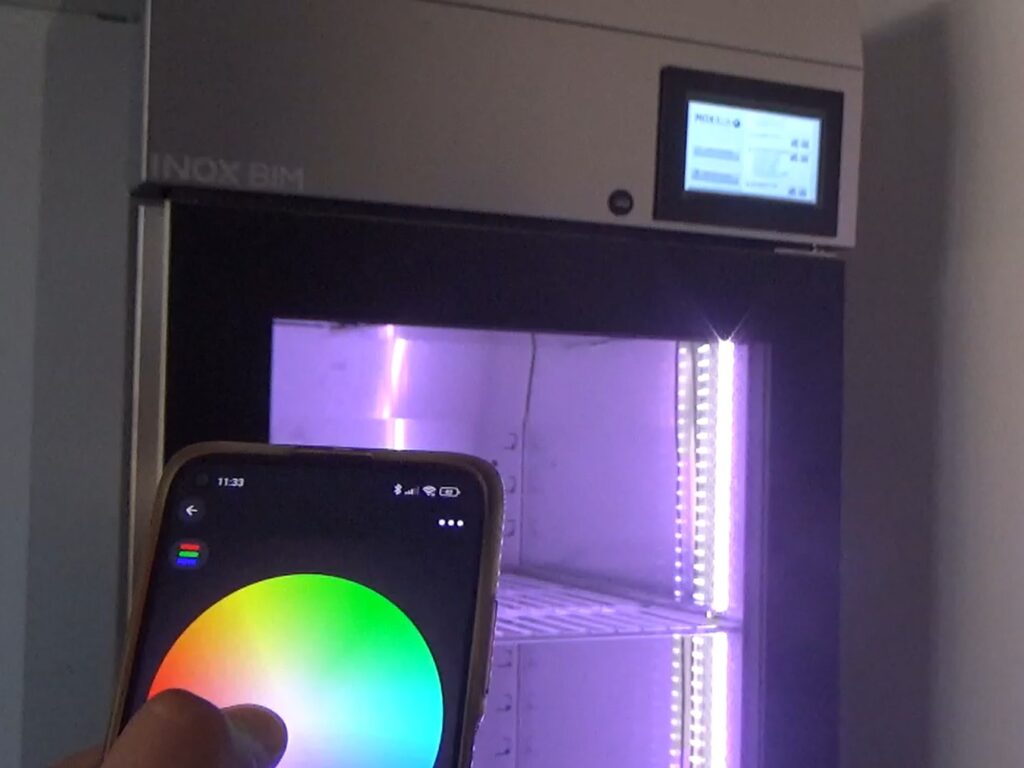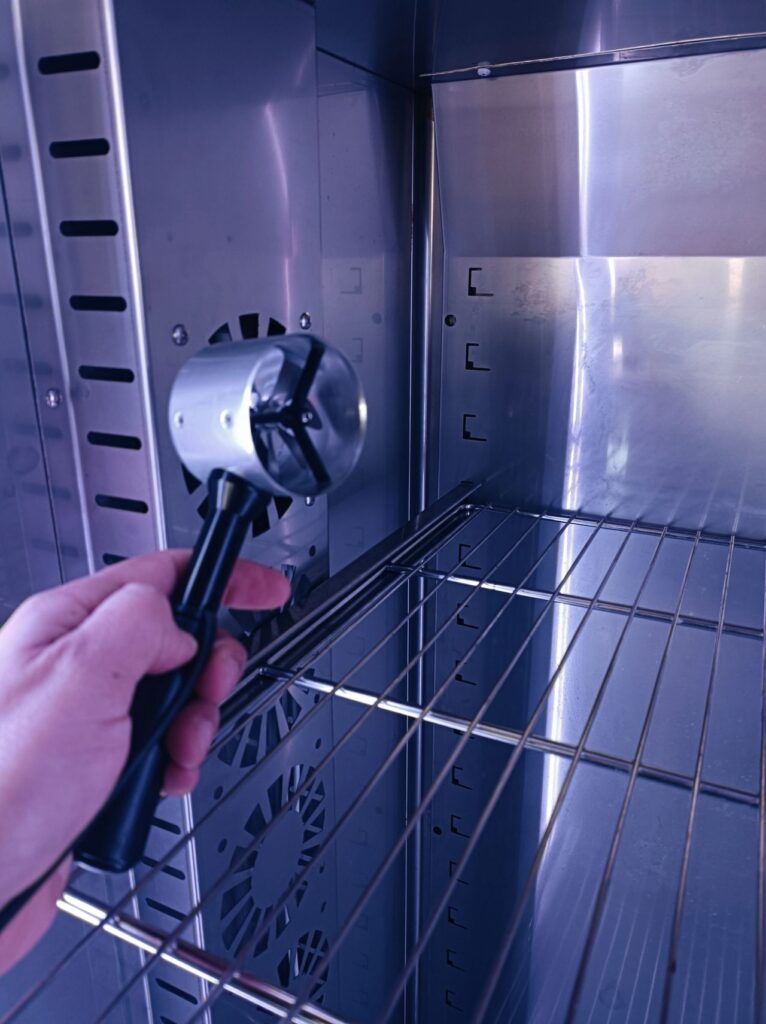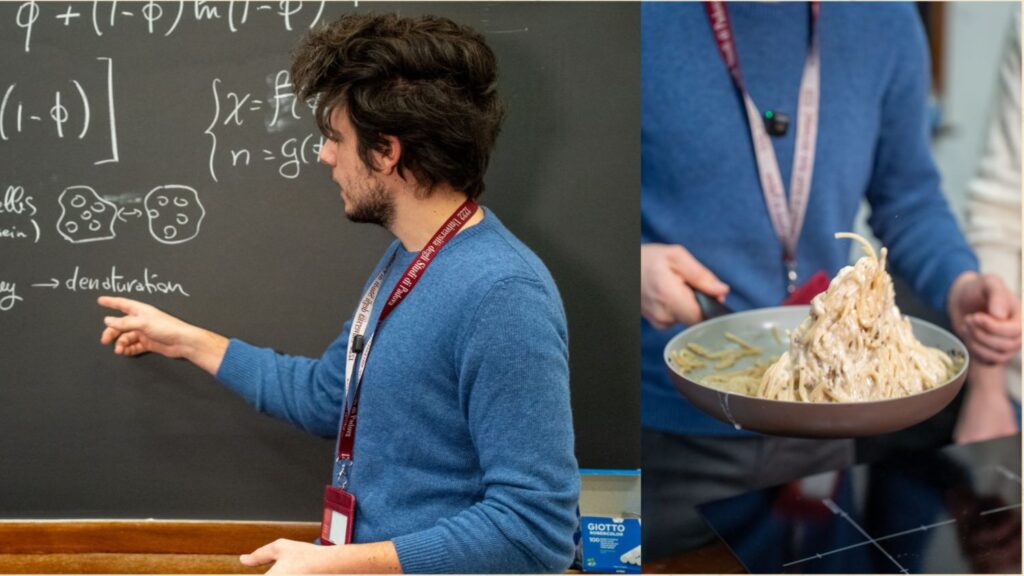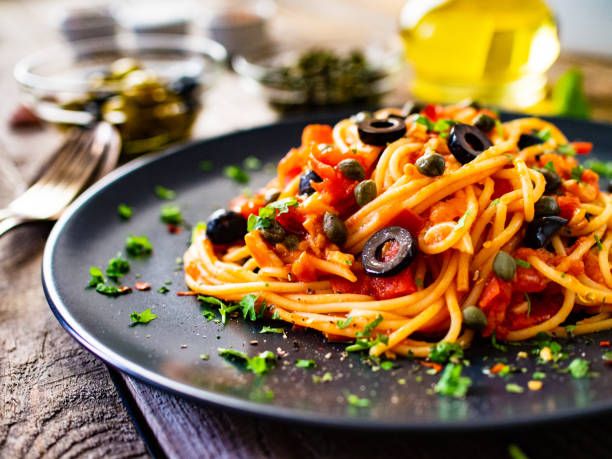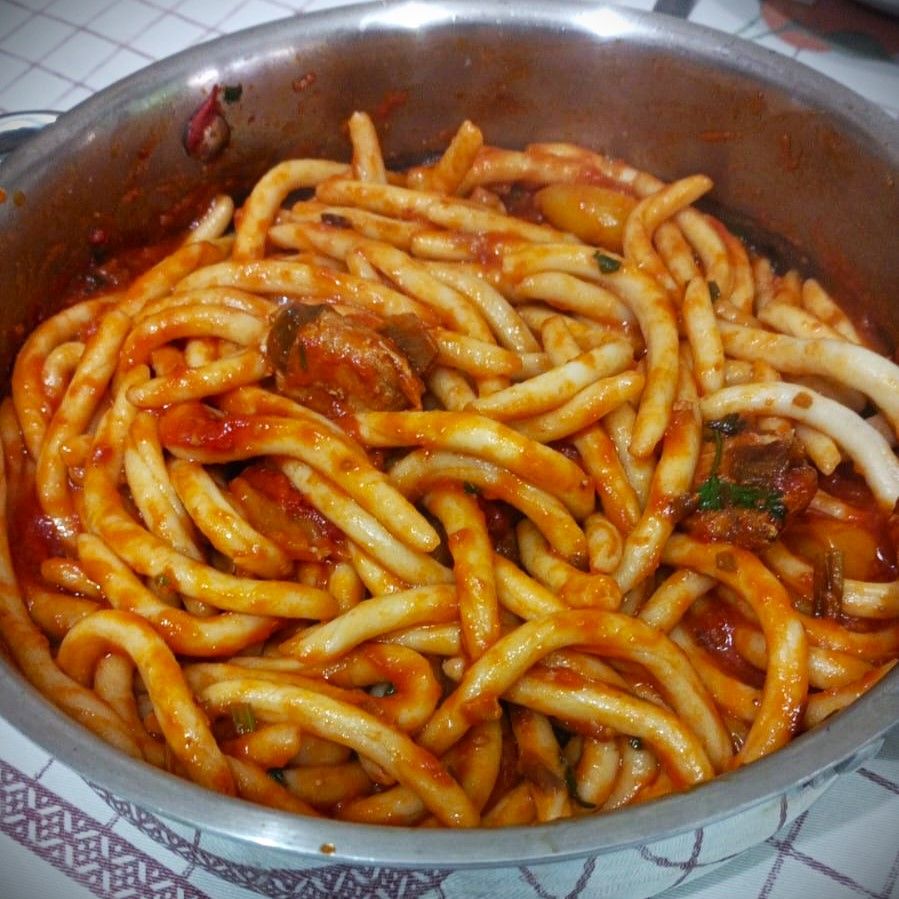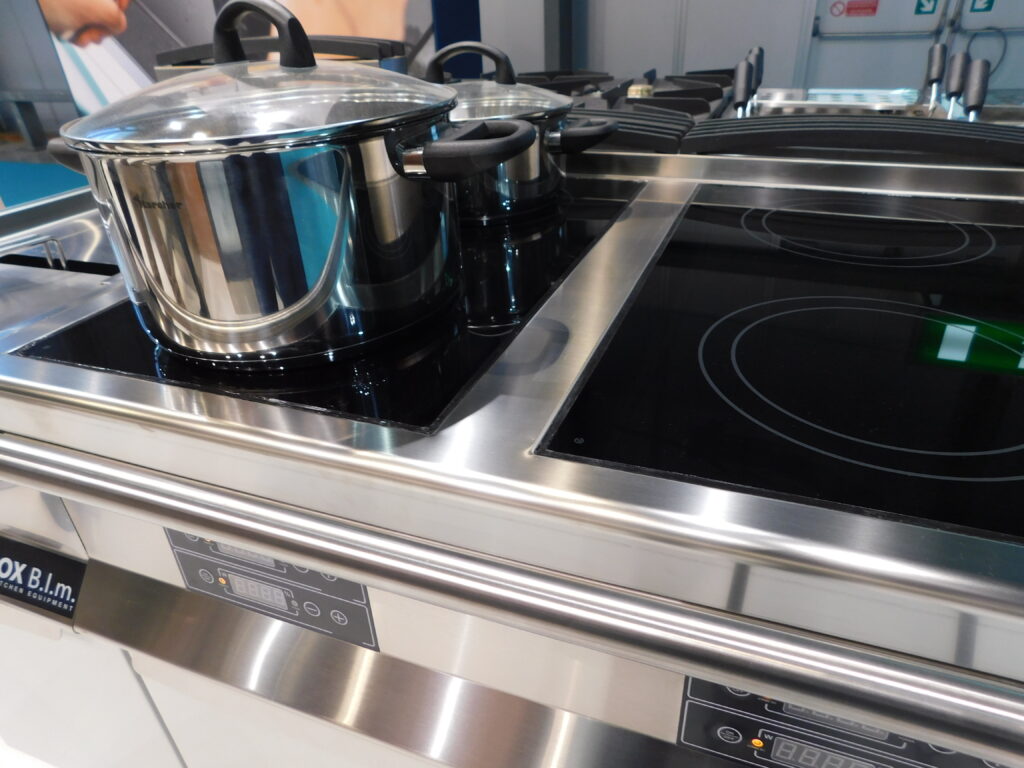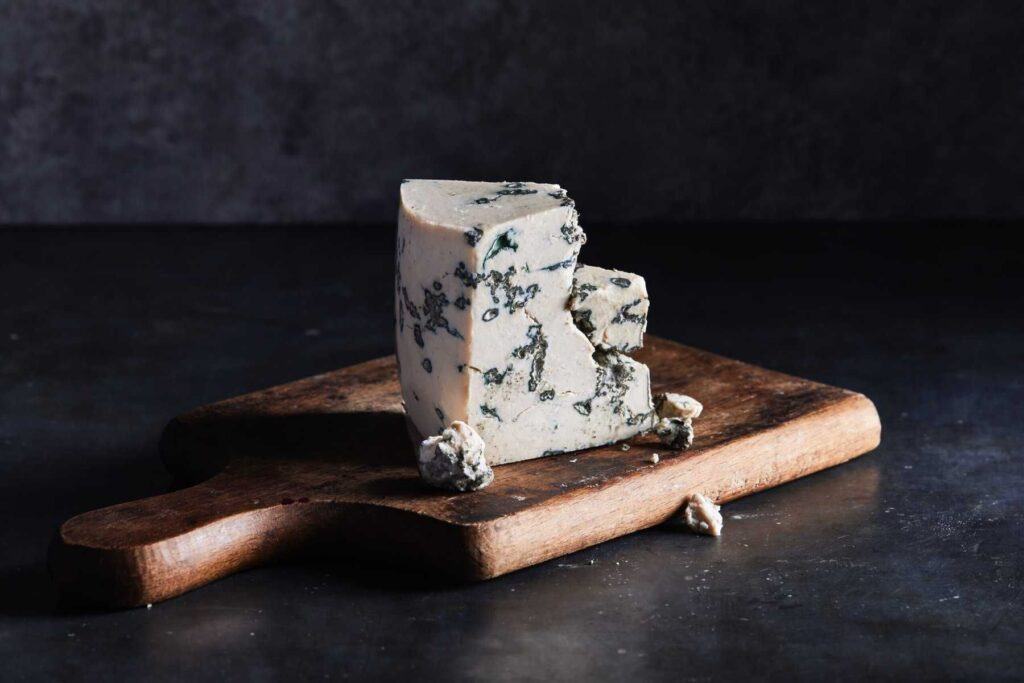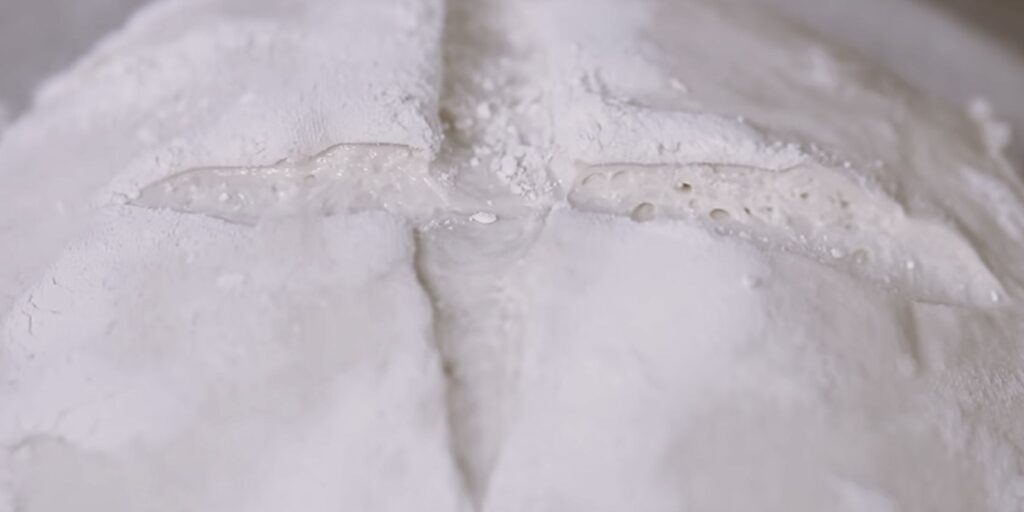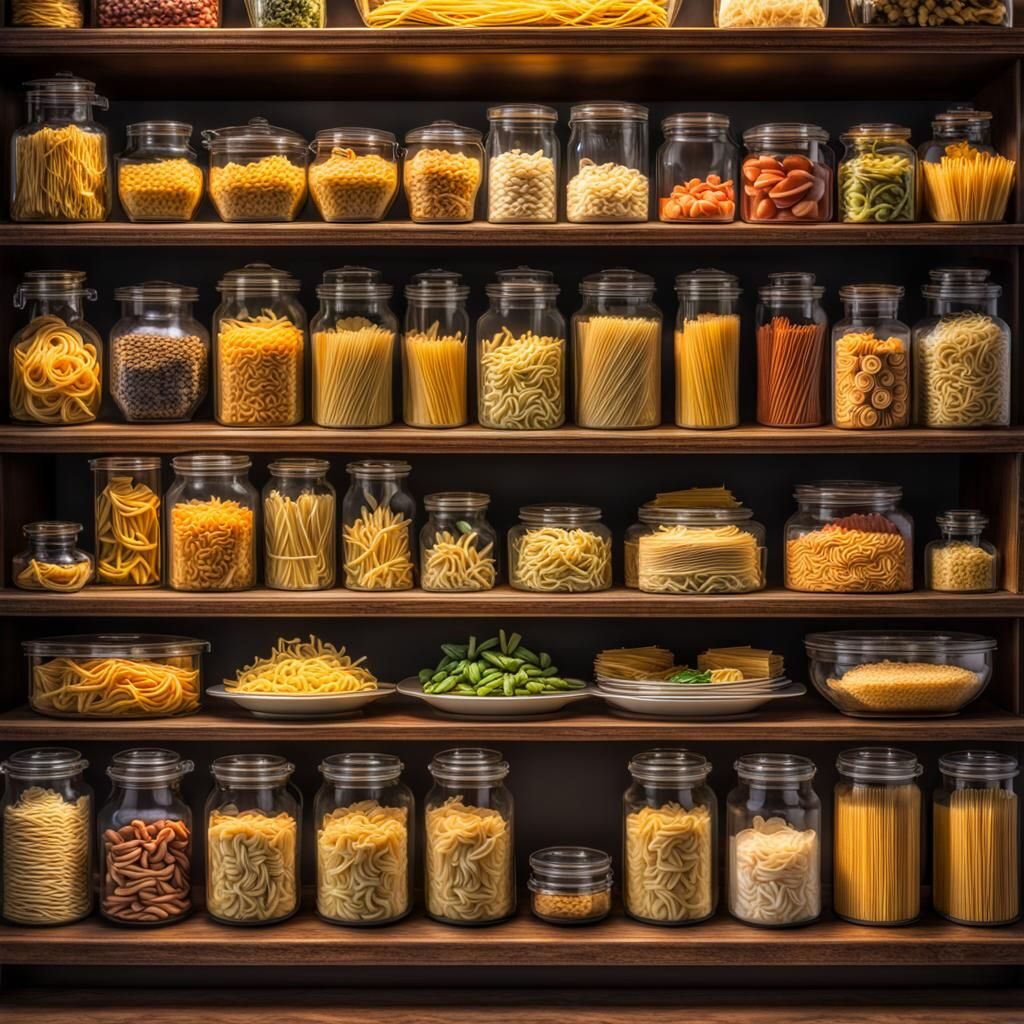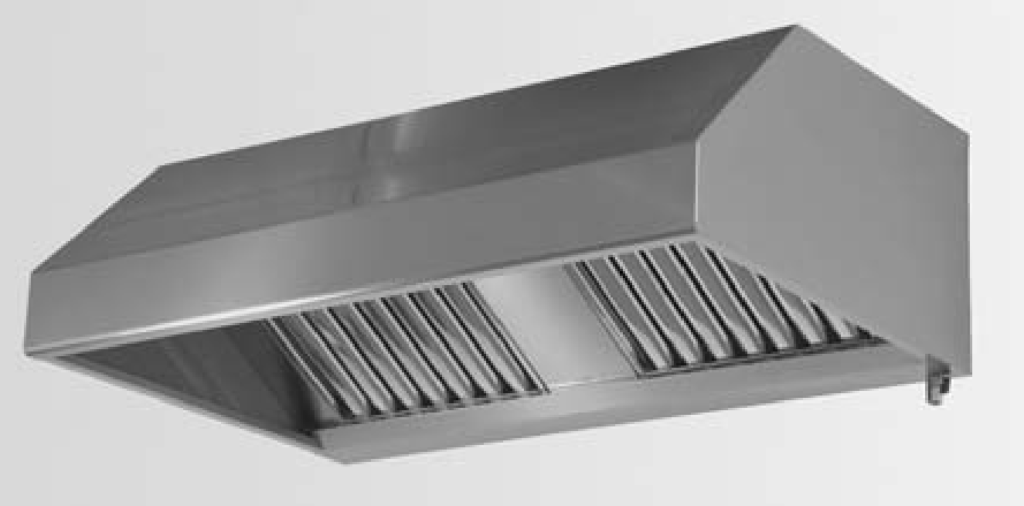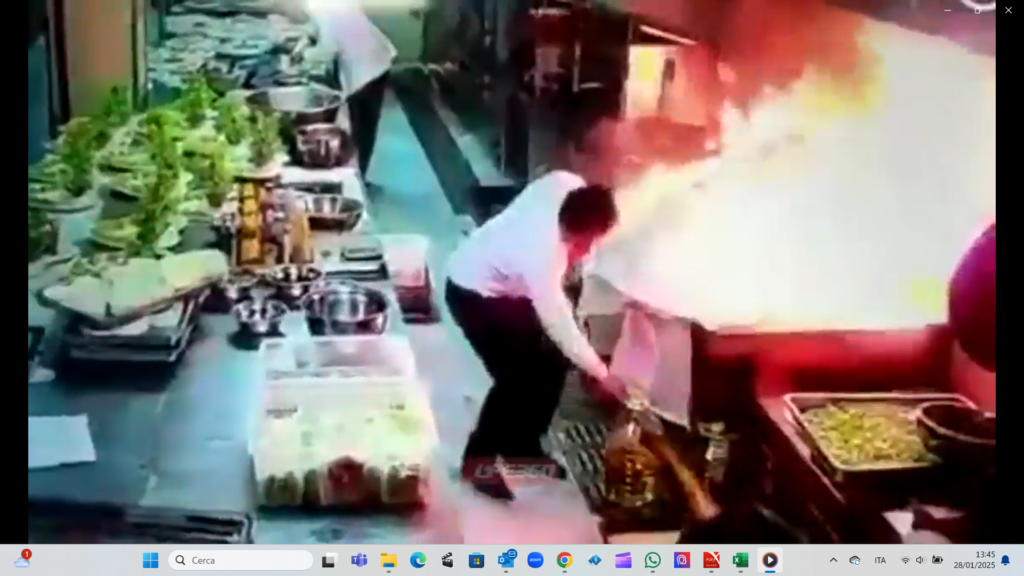The less experienced might think that dry aging and the drying process are the same thing…
Errrrr! Wrong!
(that’s supposed to be an onomatopoeia for the “buzzer sound”…).
The drying process aims to evaporate the internal liquids of the meat. The fish is cut in fine pieces, and usually the process is carried out at high temperature (40°C minimum) and it lasts approximately a dozen hours.
The dry aging process is longer (also because it is done with whole gutted pieces), up to even two weeks for particularly large animals, at a low temperature, rarely above 2°C, and a high rate of Relative Humidity (above 80%).
By drying purely and simply, one aims to eliminate as much moisture as possible in the food.
During the dry aging process, on the other hand, the proteins of the muscles are degraded and broken down into molecules giving the fish different types of flavour.
So, in the latter, moisture is important: the humidity is indeed reduced, so as to concentrate the flavour, but not completely eliminated, so that consistency is just a little denser.
Anyway, enough chitchat… Enjoy this nice pic courtesy of Batì Restaurant, in Tortoreto (Italy).
In the front row: a red snapper, an amberjack, and a sea bass (or branzino). In the back: a cod and a dorado (aka “mahi-mahi”).
All of them dry-aged with the Inox Bim climatic cabinet. Of course!
PS: to know more about the subject https://www.virdex.it/wp-content/uploads/2021/11/INOX-BIM-A-few-tips-about-Fish-Dry-Ageing.pdf

 Italiano
Italiano
